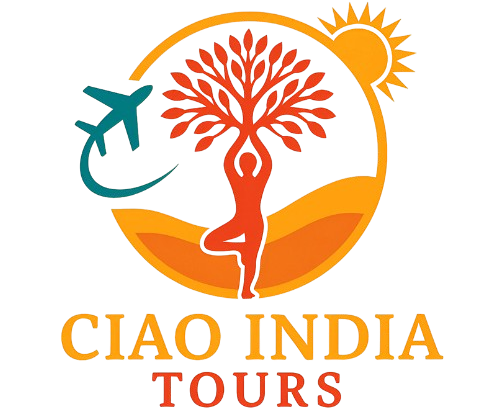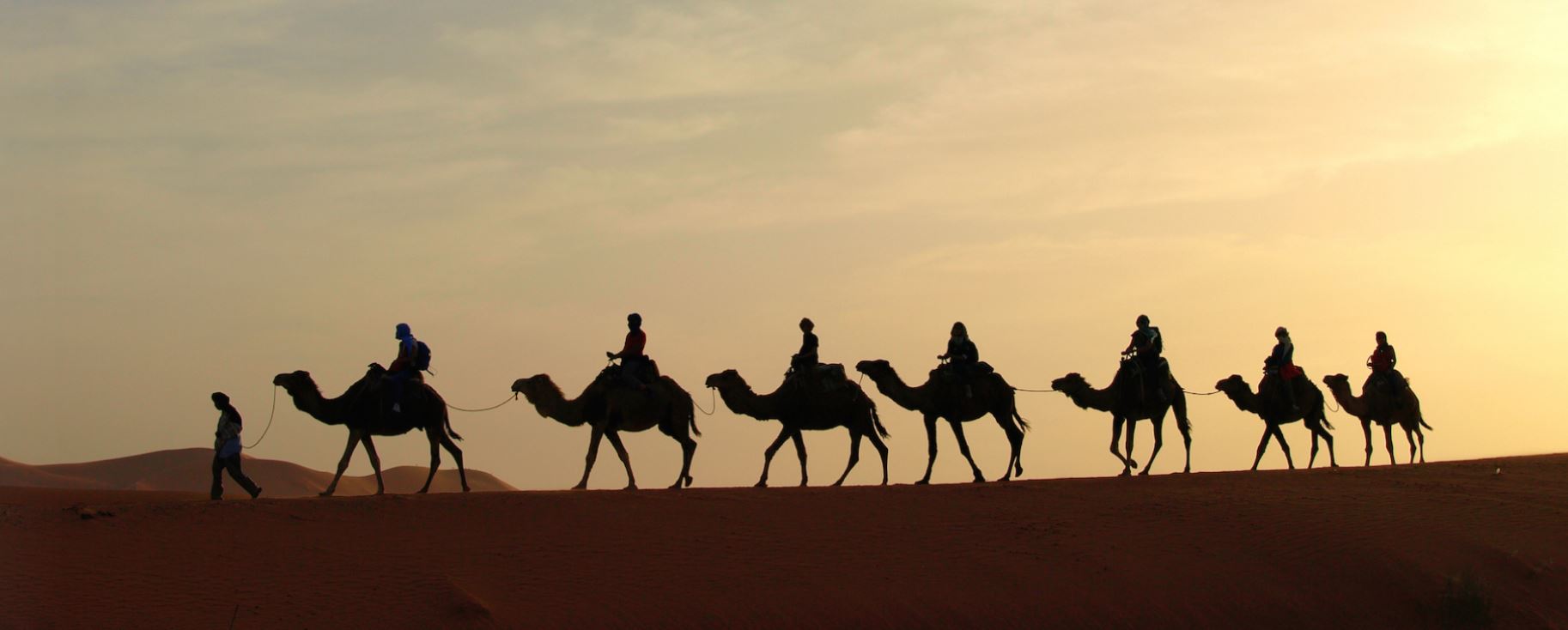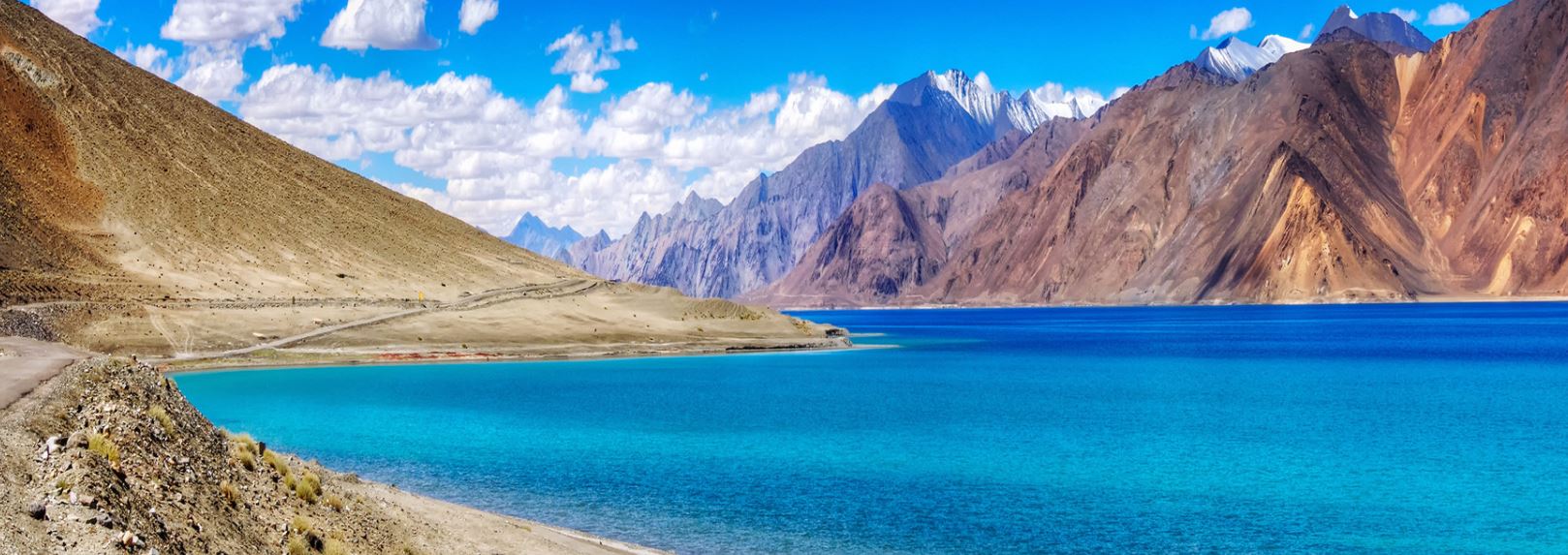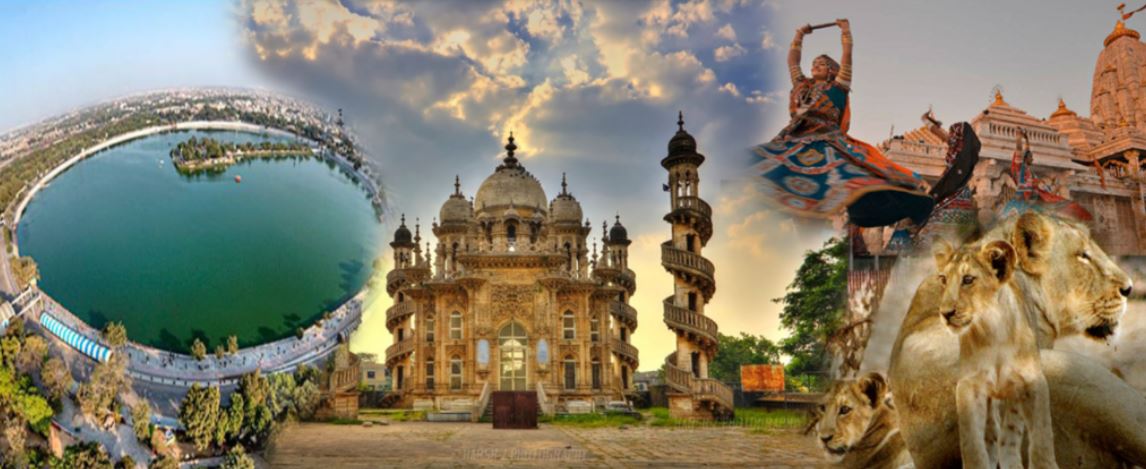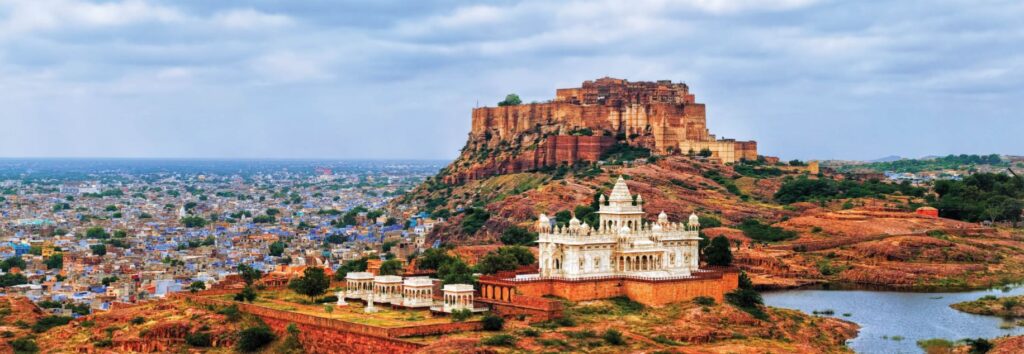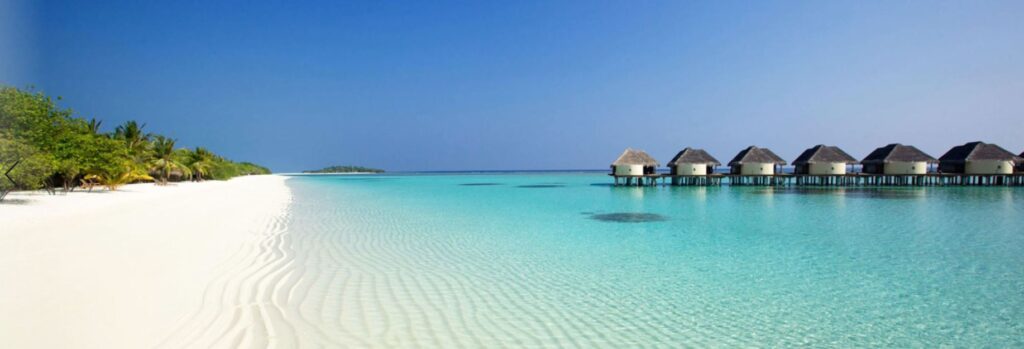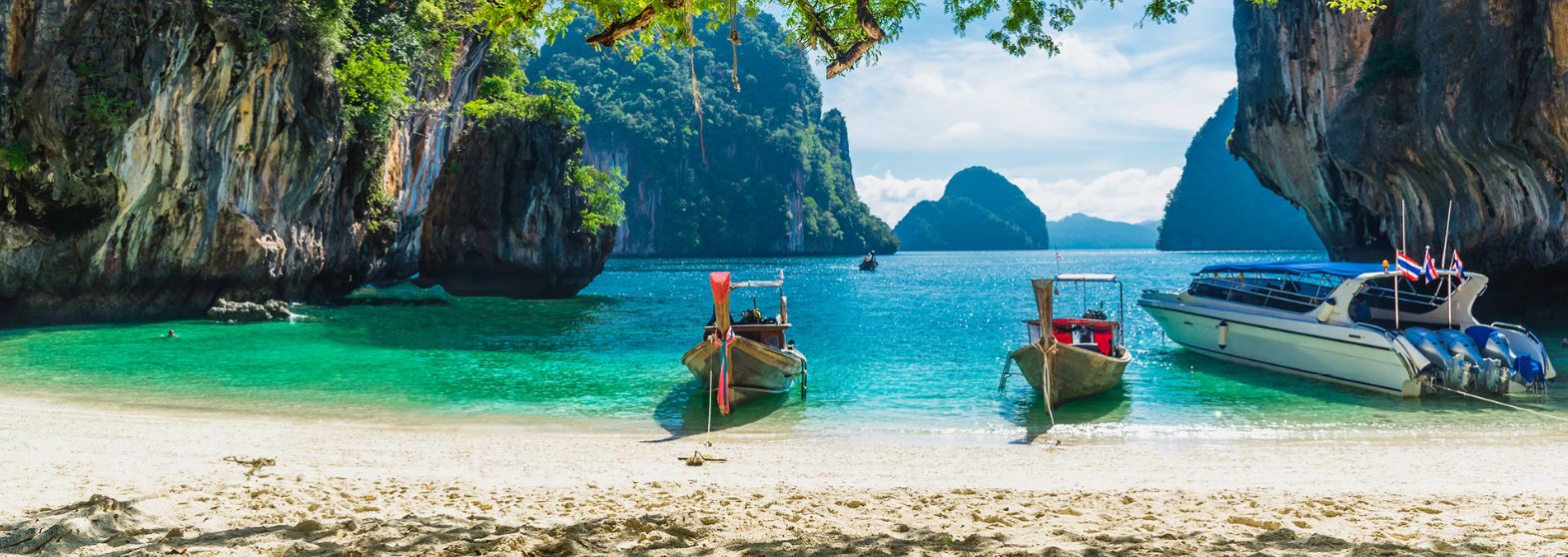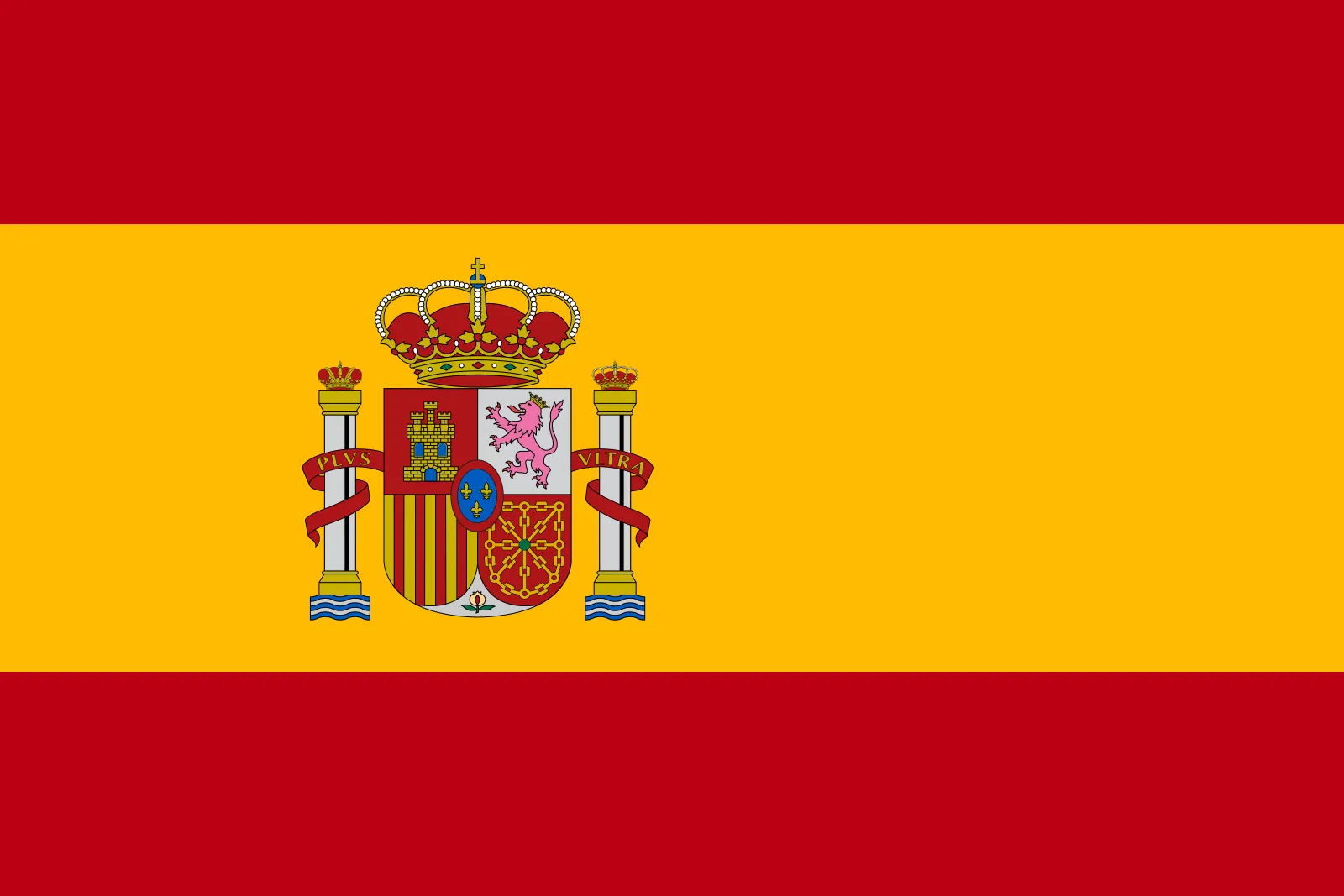« Incredible tour of India »
Program Preview
Delhi-Amritsar-Srinagar-Pahalgam-Gulmarg-Sonmarg-Kolkata-kochi-Munnar-Aleppy-Mumbai-Delhi
DAY 1, Arrival in Delhi (Hotel booked from the previous day) Incredible tour of India
Arrival at New Delhi international airport. Following the habits, the immigration formalities, and the baggage collection, ours will surely come out of the arrival terminal building after which it will be transferred to your hotel.
Capital of India and an important entrance to the country, contemporary Delhi is a vibrant metropolis, which successfully combines in its folds - the ancient with the modern. Among the fast-spiraling skyscrapers, the remains of a time gone by in the form of silent historical reminders of the ancient influence of the region. First impressions for each visitor are a species, city of the garden, lined with numerous beautiful parks.
Upon arrival at the hotel, proceed to check-in at the hotel. Standard Check-in Time at the hotel 1400 hours / Check out 1200 hours. In time proceed to the tour of old Delhi and New Delhi, the Red Fort (external photo stop), Jama Mosque, Chandni Chowk, and Raj Ghat ..
Brief information on the monuments
In the 17th century, the Mughal emperor, Shah Jahan, made his capital at Shahjahanabad, the area that covers present-day Delhi, also called the walled city.
Jama Masjid is the largest and best-known mosque in India. It is flanked by a red fort on one side and the old town Chandni Chowk on the other side. Built by Shah Jahan in the 17th century, Jama Masjid is one of the busiest in Delhi for pilgrims and tourists.
Red Fort (Photo stop) was built by the Mughal emperor Shah Jahan in the seventeenth century, which took about 9 years to complete this magnificent structure and about 10 million rupees to build the fort.
Chandani Chowk The Delhi bazaar novel can best be experienced at Chandni Chowk and around the streets. According to legend, the Chandni Chowk market was established during the reign of the Mughal emperor Shah Jahan.
Raj Ghat, resting place of Mahatma Gandhi. Raj Ghat remembers the man who is known as the Father of the Nation for his tireless and pacifist work to recover the independence of India.
Overnight at hotel in Delhi
DAY 2, Delhi - Amritsar(By Train 7 Hrs.) - Incredible tour of India
After breakfast, The day starts at 8:30
Departure for Amritsar
Arrive in Amritsar and transfer to the hotel
In the afternoon Late Touristic visits In the late afternoon, traveled to a Wagah, the border of India-Pakistan, to watch the changing of the guard ceremony. Soldiers from both countries participate in an interesting ceremony and eventually shake hands. The crowds singing patriotic songs on both sides of the border and the disciplined aggression of soldiers made a fascinating scene.
Overnight at the hotel in Amritsar
DAY 3, Amritsar - Incredible tour of India
After breakfast, the day starts at 9:00
Visit to the city of Amritsar. Visit the beautiful Harmandir Sahib, also known as the Golden Temple. It is the spiritual and cultural center of the Sikh religion. The main sanctuary is in marble and is a center of a picturesque body of water. The sacred book of the Sikhs - the Guru Granth Sahib is housed in this holy and peaceful shrine. The roof of the building is gold leaf, giving the temple its name. The community kitchen - the langar - offers free meals to anyone who wants or needs to eat there (on average, 10,000 pilgrims and visitors eat here every day).
Then visit the Jallianwalah Bagh - a memorial to the ruins of innocent natives who were massacred by General Dyer in 1919. On 13 April thousands of people gathered in a peaceful assembly on the occasion of Baisakhi - a harvest festival - at Jallianwala Bagh in heart of Amritsar. When the crowds do not disperse after the warnings, General Brigadier Reginald Dyer, an officer in the Indian army, ordered his gang of riflemen to open fire on the meeting, killing many. Later he visits the Hindu temple of Durgiana which looks like a replica of the golden temple.
Overnight in Amritsar
DAY 4, Amritsar - Srinagar( By flight 1 ) - Incredible tour of India
After breakfast, transfer to the airport according to the flight schedule for Srinagar
Arrival in Srinagar-Upon your arrival at Srinagar International Airport, you will be met by our representative who will assist you and accompany you to your waiting vehicle. From the airport, it is a 35-minute drive through the heart of New Srinagar city. The unit takes you over the Abdullah bridge that connects the banks of the Jhelum river, snaking towards the northwestern border of Kashmir. We arrive at the houseboat/hotel and check-in. Later we will take a 1-hour Shikara trip to Lake Dal. This boat ride takes you past some wonderful floating gardens, the Craft Center, and the inherited lifestyle of people who have been living in the lake for decades.
Dinner and overnight at the houseboat/hotel.
DAY 5, A Srinagar - Incredible tour of India
After breakfast proceed to Srinagar
Today we will continue on a local sightseeing tour which will include a visit to the famous Mughal Gardens, Cheshma Shahi (royal spring), Nishat (Pleasure Garden), Shalimar (Abode of Love) Mughal set up in the 16th century and these fall along the bank of Dal- Lake in the heart of Srinagar City and Shankaracharya Temple located on a small hill, thus offering a panoramic view of the entire city, along with the famous Dal-Lake and River Jhelum, En route by visiting the center of the hand-loom famous for the production of Pashmina shawls / Shahtoos and world-famous rugs, evening return to the houseboat
Dinner and overnight at the houseboat/hotel.
DAY 6, Srinagar-Pahalgam-Srinagar - Incredible tour of India
After breakfast, proceed to Pahalgam,
Leave after breakfast and proceed to Pahalgam, we drive to Pahalgam via Pampore where you can visit famous saffron fields, Awantipora and the village of Bijbehara which remains famous as the breadbasket of Kashmir. We pass from the national highway 1A to Khanabal and we cross the second largest city of Anantnag. Pahalgam is a picturesque valley about 97 kilometers south of Kashmir. Known as Pahalgam (which means The Shepherds Village), the valley is renowned throughout the world for its exotic forests, graceful streams and imposing snow-capped peaks. At Pahalgam, you can visit the Aru valley, the Beetab valley and Chandanwari (optional) and take a horse ride in the Baisaran meadows. After visiting the mountain valley for most of the day, we will return to Srinagar
Dinner and overnight at the houseboat/hotel.
DAY 7, Srinagar-Sonmarg-Srinagar - Incredible tour of India
After breakfast
Drive to the majestic mountain resort of Sonamarg. The path to Sonamarg takes us to a picturesque country road where we will meet hills, green forests, clear waterways, and fields of rice in bloom. We will zoom beyond the city of Kangan which handles all the local needs of this region. From Kangan, we will drive to Mammar, famous for its trout farm before heading to Sonamarg. We will descend once again from our vehicles to the tourist spot of Gagangir. The spot is built in the middle of the Sindh River and looks like an island with snow glaciers covering one or the other point. In Sonamarg we will take a 3-hour walk or a horse ride / local taxi on the Thajwas glacier (optional). After our return, we will visit the small town market for some snacks or simply make a visit by observing the local people who go with their daily routine. We will return to Srinagar
Dinner and overnight stay in a Houseboat in Srinagar
DAY 8, Srinagar-Gulmarg-Srinagar - Incredible tour of India
After breakfast proceed to Srinagar.
We will start the day trip to the countryside towards Gulmarg. Gulmarg (2440 meters above sea level). It is one of the most beautiful hill stations and also called "Prati di Fiori". The journey through colorful villages and rice fields gives you an idea of Kashmir's rich cultural past. We arrive at a small and picturesque market town of Tangmarg and continue on a scenic road of 14 kilometers to Gulmarg. Gulmarg has one of the best ski slopes in the world and the highest golf course with 18 holes. We arrive in Gulmarg in the early afternoon and begin a brief tour around the lawn to familiarize ourselves with beauty. In Gulmarg, we will go up to the Gondola cable car system
Dinner and overnight stay at the Houseboat.
DAY 9, Srinagar-Kolkata By flight - Incredible tour of India
After breakfast, transfer to the airport according to the flight schedule
Getting to Kolkata International Airport. Following the habits, immigration formalities and baggage collection, our representative will meet you as you exit the terminal building after which you will be transferred to your hotel.
In the afternoon visit Hawrah Bridge
Howrah Bridge is a suspension bridge over the Hooghly River in West Bengal, India. Commissioned in 1943, the bridge was originally called the New Howrah Bridge, because it replaced a bridge of boats in the same position that connected the two cities of Howrah and Calcutta (Calcutta). On June 14, 1965, Rabindra Setu was renamed by the great Bengali poet Rabindranath Tagore, who was the first Indian and Asian Nobel Prize winner. It is still popularly known as the Howrah bridge.
The bridge is one of four on the Hooghly River and is a famous symbol of Kolkata and West Bengal. The other bridges are the Vidyasagar Setu (popularly called the second bridge of Hooghly), the Vivekananda Setu and the new Nivedita Setu. Weathered the storms of the Bay of Bengal region, carrying a daily traffic of around 100,000 vehicles and perhaps more than 150,000 pedestrians, making it easily the most crowded cantilever bridge in the world. The third longest cantilever bridge at the time of its construction, the Howrah Bridge is currently the sixth longest bridge of its kind in the world.
The flower market Near the southeastern end of Howrah Bridge, this flower market is charming and colorful almost 24 hours a day. However, if you visit at dawn, you will see wholesalers arrive with huge flower shipments that are then auctioned off to dealers. Many workers live in makeshift shacks, bathing in the river behind a ghat with the sunset views of Howrah Bridge. Around 7 am, local wrestlers practice their art on a small sand caged area, slightly set back from the river.
Kumortuli (also spelled Kumartuli, or the archaic spelling Coomartolly) is a traditional potters' neighborhood in northern Kolkata (formerly known as Calcutta), the capital of the eastern Indian state of West Bengal. The city is famous as a hot spot for sculpting that not only produces clay idols for various parties, but also regularly exports them.
College Street is most famous for small and large bookstores, which give it the nickname Boi Para (Colony of Books). People from all over the city and different parts of the state gather here for their books. Many large parts of the Bengali publishing industry (such as: Ananda Publishers, Dey's Publishing, Rupa & Co., etc.) are located here. The street is dotted with countless tiny book stands that sell new and old books. An article in the Smithsonian magazine described College Street as ... half a mile of bookstores and shelves spilling out onto the sidewalk, bringing first editions, pamphlets, paperbacks in every Indian language, with more than a fair smattering of books inside and outside of press from France, Germany, Russia and England. Rare books can be bought at bargain prices and extensive bargaining takes place.
Indian Coffee House - The history of the Coffee House at College Street can be traced back to Albert Hall, founded in April 1876. Later, the Coffee Board decided to start a joint cafe at Albert Hall in 1942. Considerable citizens were regular visitors to the place. In 1947, the central government changed the name of the place to "Coffee House". The place became a meeting place for poets, artists, writers and people from the world of art and culture. In 1958, the management decided to close the Coffee House, but it was reopened the same year, after the professors of the Presidency College and Calcutta University made a special petition to the government, to save the heritage site. In 2006, a huge financial crisis prevented the cooperative society from renovating the coffee house. Although some companies like Asian Paints have turned to the company with offers to renovate the restaurant, the offers have been rejected due to the clash of rules and conditions.
Overnight at hotel in Kolkata
DAY 10, Kolkata - Incredible tour of India
After breakfast, the day starts at 9:00
Visit the Victoria Memorial
The Victoria Memorial is a large marble building in Kolkata, West Bengal, India, built between 1906 and 1921. It is dedicated to the memory of Queen Victoria (1819-1901) and is now a tourist and museum destination under the auspices of the Ministry of Culture. The memorial lies on the Maidan (land) near the bank of the Hooghly River, near the Jawaharlal Nehru road. In January 1901, at the death of Queen Victoria, George Curzon, first Marquis Curzon of Kedleston and Viceroy of India, suggested the creation of a suitable memorial.
The Cathedral of St. Paul is a CNI, Church of North India Cathedral of Anglican background in Kolkata, West Bengal, India, known for its Gothic architecture. It is the seat of the diocese of Calcutta. The cornerstone was laid in 1839; the building was completed in 1847. It is said to be the largest cathedral in Kolkata and the first Episcopal church in Asia. It was also the first cathedral built in the overseas territory of the British Empire. The building stands on Cathedral Road on the "island of attractions" to offer more space to the growing population of the European community of Calcutta in 1800.
Then we visit the motherhouse of the Missionaries of Charity
The motherhouse of the Missionaries of Charity is a sacred place of pilgrimage and reverence for those in search of a more meaningful existence. It was founded by Blessed Mother Teresa in 1950 with the aim of selflessly serving humanity and elevating the afflicted humanity towards the way of salvation. After Mother Teresa left her mortal body in 1997, she was buried in a tomb inside the house where she lived and served. The site of the tomb is very simple yet exudes an enormous amount of benign and pure vibration that fills the heart with gratitude and peace. Located between the noise and the crowd, Madri's tomb is a true reflection of her life that has contemplated the example of deep and conscious meditation.
Free time in the evening
Overnight at hotel in Kolkata
DAY 11, Kolkata-Cochin (con Volo) - Incredible tour of India
After breakfast, transfer to the airport according to the flight schedule
Arrive at Cochin International Airport. Following the customs, immigration formalities and baggage collection, our representative will meet you as you exit the terminal building after which you will be transferred to your hotel.
The evening is free for relaxation and walking alone
Overnight at the hotel in Cochin
DAY 12, Cochin - Incredible tour of India
After breakfast, the day begins
Cochin, world-famous port and commercial and industrial capital of Kerala.
Visit the Mattancherry area,
Palace of the Dutch, but originally built by the Portuguese, with its beautiful wall paintings, which depict mythological episodes in vivid colors.
The Church of San Francesco, the first European church built in the country, which houses the tombstone of Vasco de Gama, who in fact remained buried here from 1524 until 1538, when his remains were taken to Portugal.
The Jews' Street - The Jew Street is lined with shops selling antique crockery, carved wooden furniture, bronze and brass sculptures, remains of traditional houses, and jewelry. The antique sellers of these streets are the descendants of a rapidly declining population of Jews who settled here in 52 AD Every piece they sell has its own story to tell: a palace or a house of nobility, journeys through many lands and ages.
The synagogue - The Jewish synagogue here, a mark of exceptional architecture and history, is a fascination for hundreds of visitors every day. There are also other Jewish settlements in the state. But Kochi has made a name with its synagogue and the famous antique shops. The Cochin Jews settled in the kingdom of Cochin in southern India, now part of the state of Kerala. Already in the 12th century, mention is made of the Jews in southern India. ... These people later became known as the Jews of Malabari.
The Kathakali show - Later you can witness the spectacle of Kathakali, the traditional dance of Kerala.
Overnight at the hotel in Cochin
DAY 13, Cochin-Munnar - Incredible tour of India
After breakfast departure to Munnar at 8:30
Arrival in Munnar and transfer to the hotel, then sightseeing in Munnar
Upper station - In the evening, visit the upper station is a tourist destination in the hills of Kannan Devan of Munnar. It is a part of the border between the Idukki-Theni districts in the state of Kerala and Tamil Nadu. The metro station is remarkable, the city is passing through Kannan Devan tea delivered here by Munnar and Madupatty on the railway and then down by cable car to Kottagudi. This area is popular for the rare Neelakurinji flowers. The Kurinjimala Shrine is nearby. The Top Station is the western entrance to the planned Palani National Park.
Ecological point - Munnar - one of the most picturesque cities of Kerala. In this wonderful postcard as fascinating as the city of Munnar, Echo Point rests as an exquisite place to visit. Its uniqueness lies in its natural echo characteristic, where your voice screaming returns to you. The stunning scenery of Echo Point due to clustered tea plantations and spice and coffee gardens determined its popularity among trekkers and nature strollers. In a completely peaceful and regenerating environment, strollers and trekkers can move along the velvety slopes and photograph moments of serenity and rich natural beauty.
C.S.I Christ Church - The old Chiesa del Cristo CSI is the seat of the CSI Munnar Pastorate with over a thousand Tamil families and 18 outstation churches. The church, counted among the most venerated places of Munnar, was built in 1910 by the English. This holy place is popular for its exquisite stained-glass windows. In addition, he engraved brass plates that were made in the cough memory. The site of the church was formally consecrated by Rt. Rev. Noel Hodges on 15 April 1900 on the occasion of Easter. The foundation stone of the church was laid in March 1910 by Sir A.K. Muir was inaugurated on April 16, 1911 by the Rev. W. F. Hoysted, then a priest. When the British left Munnar in 1981, they handed over the charge of the church to the diocese of Kerala of Northern CIS.
In the evening visit the local market
Overnight in hotel in Munnar
DAY 14, Munnar - Incredible tour of India
After breakfast, visit Munnar at 8:30
Sightseeing of Munnar
Visit Laxmi Hills, Munnar Tea Museum Letchmi Hills We take about 3 kilometers towards Cochin (road) from Munnar, to the starting point of the Letchmi Hills trek. (Usually starting around 08.30 or 09.00.) The route is at a height of 1420 meters, about once around 30-40 minutes, after reaching the top of the hill, the rest of our trekking couple will be on ridge offering stunning views around, it will be across the grasslands, one side will be rocky mountain slope and the other will be tea plantations, Shola forest patch etc ...
Also visit the Lllakam Waterfall, Munnar Tea Museum (Here opportunity to taste tea and see how to make tea)
Munnar is perhaps the most beautiful of places to preserve and think about some of the great boulders of Kerala. Tata Tea has recently opened a museum of tea and tourists, a flagship, seen today in the region. The museum established at the Nallathanni Estate of Tata Tea is a tribute to the obstacles and the rigors of its pioneers, in an important plantation center of Kerala. The Tata Tea Museum diligently depicts the growth of Munnar tea estates, actually transmitted through some of the displays such as the rudimentary tea roll at the modern fully automated tea factory.
Overnight in hotel in Munnar
DAY 15, Munnar-Aleppy - Incredible tour of India
After breakfast departure to Alleppey at 8:30
Arrival in Alleppey and floating boat transfer (lunch and dinner included)
Free day to relax in the boat.
Overnight on a floating boat in Alleppy
DAY 16, Aleppy-Cochin-Mumbai( By Flight) - Incredible tour of India
After breakfast
Transfer to Kochi airport for Mumbai flight
Arrival in Mumbai and transfer to the hotel
Free evening for relaxation
Hotel accommodation in Mumbai
DAY 17, Mumbai
After breakfast, the day begins at 8:30
We go to visit the caves of Elephanta, Gateway of India, Museum "Prince of whales", visit Mani Bhawan.
Elephanta caves are a network of sculpted caves located on the island of Elephanta or Gharapuri in the port of Mumbai, 10 kilometers east of the city of Mumbai in the Indian state of Maharashtra. Transfer to the Gateway of India to reach the Elephanta caves (closed on Mondays). These caves are famous for the presence of ancient sculptures and the temple dedicated to the god Shiva. After the visit, return to the city and visit the "Prince Charles" museum, considered a heritage of the city of Mumbai for its admirable architecture (closed on Mondays).
The Prince of Wales Museum, now commonly known as 'Chhatrapati Shivaji Maharaj Vastu Sangrahalaya', was founded in the early 20th century. This museum is considered a heritage structure in Mumbai because of its admirable architecture. The Prince of Wales museum is one of the most significant museums in India. The museum houses several collections of ancient works of art, sculptures, and artifacts in its galleries. After the renovation project began in 2008, many new galleries were opened containing works of Indo God Krishna, traditional Indian fabrics and costumes. Inside the museum, there are regular exhibitions and conferences on different topics. The Prince of Wales Museum was originally a building that was used as a military hospital for performances for Welfare children. Tourists from all over the world make it a point to visit this magnificent heritage building and to explore the various ancient artifacts preserved within this museum.
Dhobhi Ghat of Mumbai is located in the heart of Mahalaxmi, Mumbai. This Ghat is famous throughout the world for its rich history, the films shot here, and for being the largest laundry in the world. Dhobi Ghat can be seen from the overpass of Mahalaxmi Ghat.
You see washer-men, known as Dhobis in India, who woke up very early in the morning. They begin to do their work at 4:30 AM work until 22:00. You can see numerous men and women washing their clothes in large sinks with their hands. And this has been going on for centuries.
Mani Bhavan was the headquarters of Gandhi in Mumbai for about 17 years, from 1917 to 1934. It was from Mani Bhavan that Gandhi began the Non-Cooperation movements, Satyagraha, Swadeshi, Khadi, and Khilafat. Gandhi's association with the charkha began in 1917, while he was staying at Mani Bhavan. Mani Bhavan is also closely associated with Gandhi's involvement in the Family Government Movement, as well as his decision to refrain from drinking cow's milk to protest the cruel and inhuman practice of phookans gathered to raise cattle during that time. In 1955, the building was occupied by the Gandhi Smarak Nidhi to keep it as a monument to Gandhi.
Overnight at hotel in Mumbai
DAY 18, Mumbai
After breakfast at 8:30 am
Colaba Market - This market is a maze of roads and lanes, with virtually every inch full of shops and stalls. In some cases, this consisted of a piece of cloth or cardboard on the ground with the goods piled on top. There is also a huge number of street food stalls cooking food on the side of the road and on sidewalks.
This is more a market for the locals but is popular with tourists, it's worth a visit to enjoy the atmosphere and experience the hustle and bustle of these busy streets. It is a real pleasure for the senses, with the sights, sounds, and smells.
Crowford Market - Crawford Market is one of Mumbai's oldest markets. Located very close to the Vittoria station (UNESCO World Heritage Site), this market is located in a single building built in Gothic style. Inside the market, there are shops where they sell a lot of items for everyday use or as a curiosity. Maintaining the market is a concern, with security a particular concern, with some incidents recently. It is hoped that the authorities will wake up and restore this historical site at least in part of its past glory.
Victoria Station (UNESCO World Heritage Site) - The Chhatrapati Shivaji Terminus, formerly known as Victoria Terminus Station, in Mumbai, is an exceptional example of Victorian neo-Gothic architecture in India, combined with themes derived from traditional Indian architecture. The building, designed by the British architect F. W. Stevens, became the symbol of Bombay as the "Gothic city" and the main international merchant port of India. The terminal was built over 10 years, starting in 1878, according to a Victorian Gothic design based on Italian models of the late Middle Ages. Its remarkable stone dome, turrets, pointed arches, and eccentric ground floor are close to the traditional architecture of the Indian palace. It is an exceptional example of the encounter between two cultures since British architects have worked with Indian artisans to include the tradition and idioms of Indian architecture, thus creating a new exclusive Bombay style.
Panjrapole The Stable of cows - Bombay Panjrapole was founded in 1834 by businessmen Jamsetjee Jeejeebhoy and Amichand Shah, with the help of the philanthropist Parsi Cowasjee Patel. The intention was to look after stray dogs and pigs, which the British had ordered to shoot at night. The cows were introduced to produce milk to feed the strays and were secondary. However, over time, they have multiplied and become the main attraction. And they are absolutely adorable! The little ones, with their gigantic floppy ears, reminded me of dogs rather than calves. They climbed to attract attention and wanted to be fed manually. These days, Bombay Panjrapole takes care of over 350 cows (some of which are disabled) plus other strays like donkeys, goats, rabbits, parrots and ducks.
Overnight at Hotel at Mumbai
DAY 19, Mumbai-Delhi (by flight)
Transfer to Mumbai airport for the flight to Delhi according to the flight schedule
Arrival in Delhi and transfer to the hotel
Free day for shopping and relaxation.
Overnight at hotel in Delhi
DAY 20, Delhi - Next Destination
After breakfast, we leave for Delhi airport according to your flight schedule
Ciao India Tours wishes you a pleasant journey
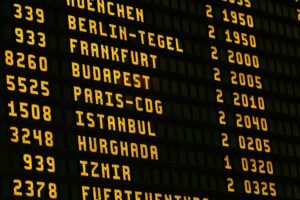
an incredible tour of India
